It might seem like common sense: mental health inpatients do better in well-designed environments. Natural light, use of colour and choice of furniture all play a part. A few projects are making a difference, but there’s still a long way to go.
Mental health wards, in my experience, tend not to be particularly aesthetically pleasing places. Often shabby, they’re also clinical, unyielding and overwhelmingly beige, with stained, fraying chairs and grubby walls. Art – and particularly colour – is hard to come by, and what you do see is pretty uninspiring: a stock image of a horse or a painting of a wooded landscape hanging on a greying wall and illuminated by fluorescent strip lighting is hardly likely to give you much of a sense of joy.
Some discomfort is obviously situational: often there against your will, you’re likely to be experiencing distress, are isolated from outside support networks and may not want to adhere to the treatment plan presented to you by your clinical team. But the design of wards can have an impact too, with physical environment an often overlooked but nonetheless vital part of the healing process.
Though research in the area is still limited, there is proof that more pleasant environments have a clinically significant impact on how patients act, think and feel. One study found that thoughtfully designing wards could even result in positive behavioural changes in patients. Furniture style, floor covering and colour scheme all have an impact on their experience, as does a focus on other features, including natural light.
Another study found that the interior design of a facility – including a simple change in how seating was arranged – helped create a “more supportive, stabilised environment” for those with schizophrenia.
Hospital Rooms, Croydon psychiatric intensive care unit (PICU)
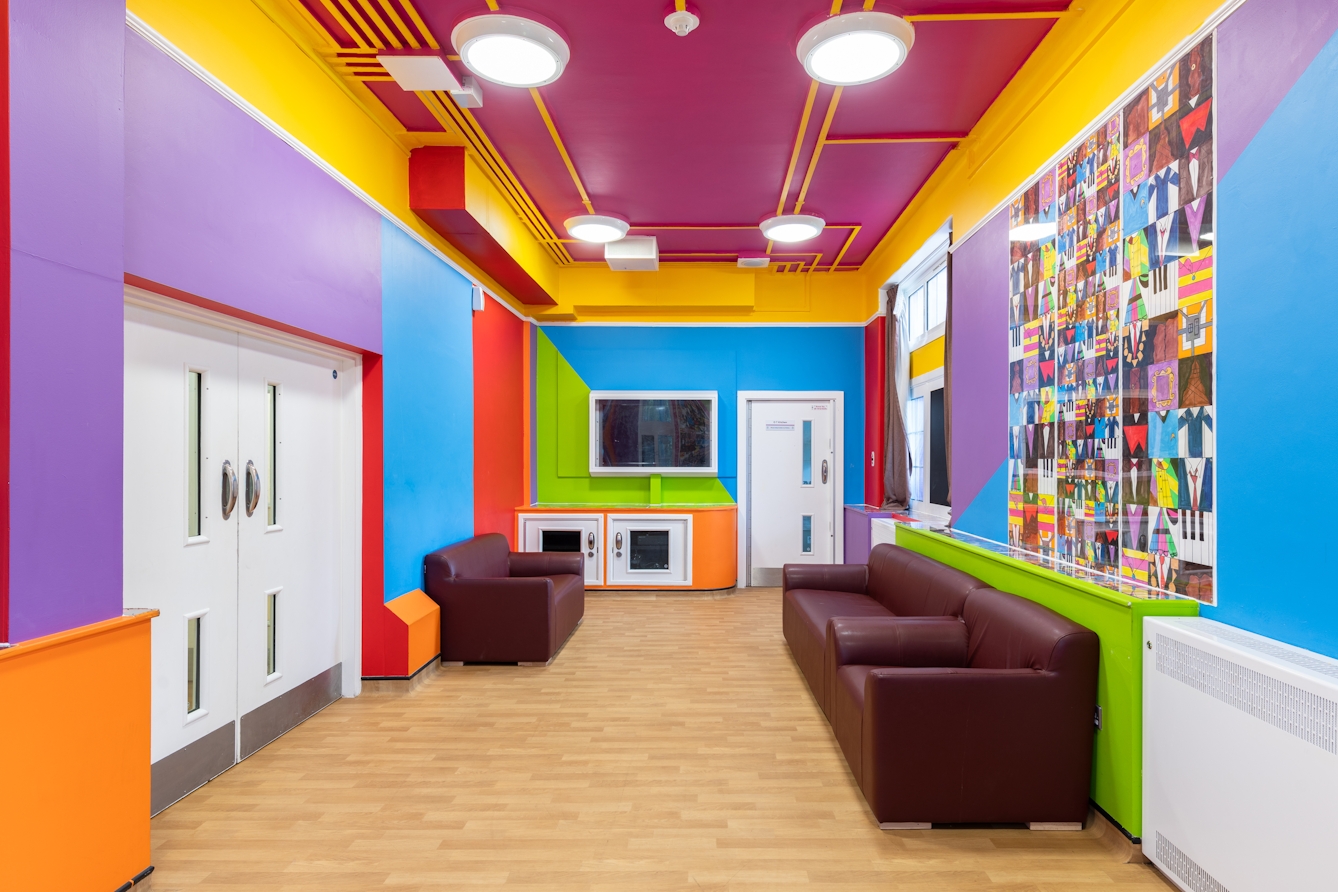
In 2019, Hospital Rooms worked with South London and Maudsley NHS Foundation Trust to create six artworks for Croydon PICU, a psychiatric intensive care unit for men located in Bethlem Hospital. The artists worked collectively with patients and staff to co-produce thoughtful and engaging spaces across the unit.
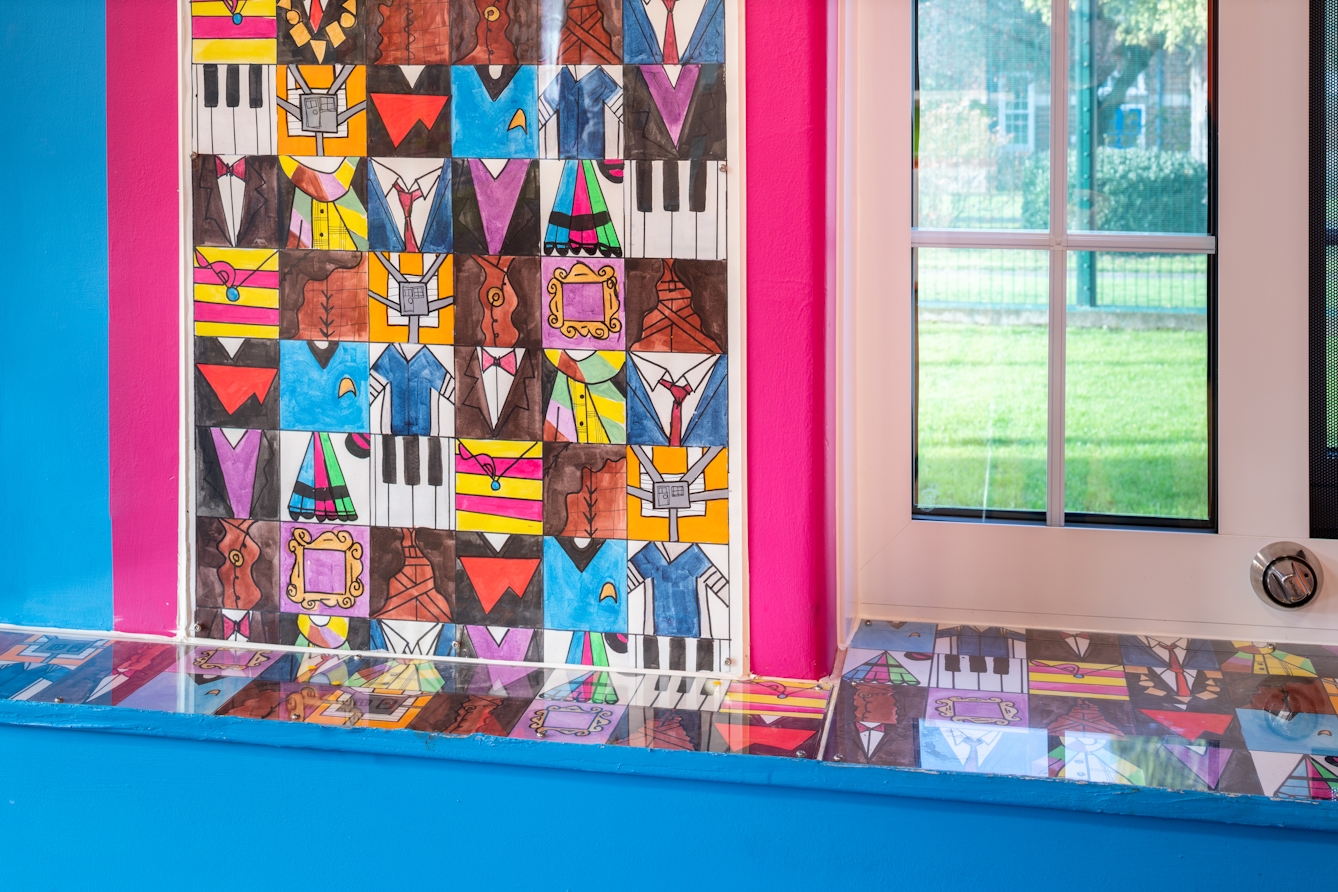
Artist Jessica Voorsanger chose to collaborate on changing the TV Room. Her workshop involved the patients making drawings inspired by the TV shows and films they enjoyed and with which they had a positive connection. The idea was to create a simple graphic image or motif based on their show, which would be repeated as part of a pattern.
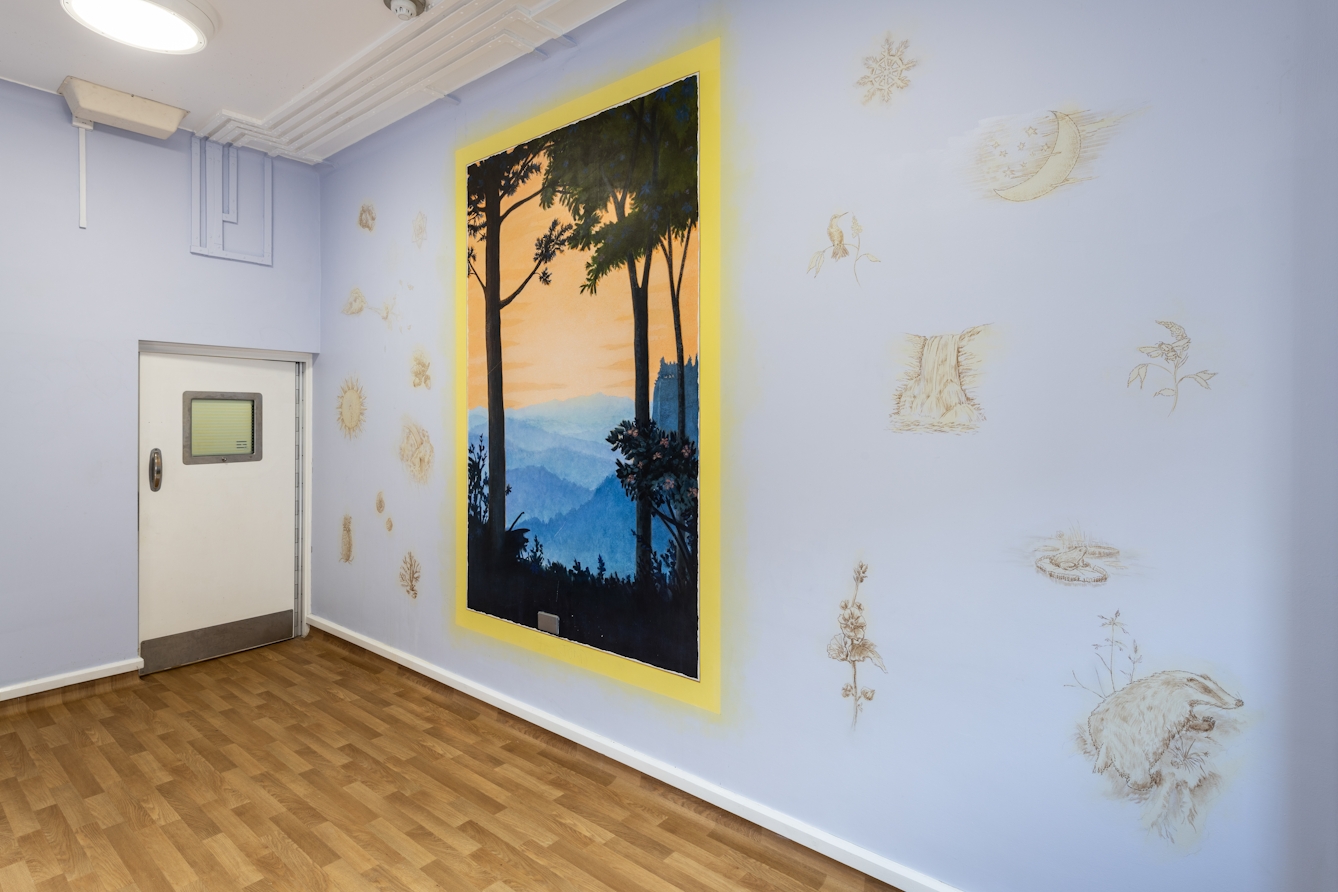
The Extra Care Room is used for patients who need a low-stimulus environment for time away from the rest of the ward. Artist Michael O’Reilly’s central image was chosen for its compositional qualities. It elevates the viewer, freeing them to contemplate a calm expanse, while at the same time surrounding them with a sense of shelter and resilience within the wooded foreground.
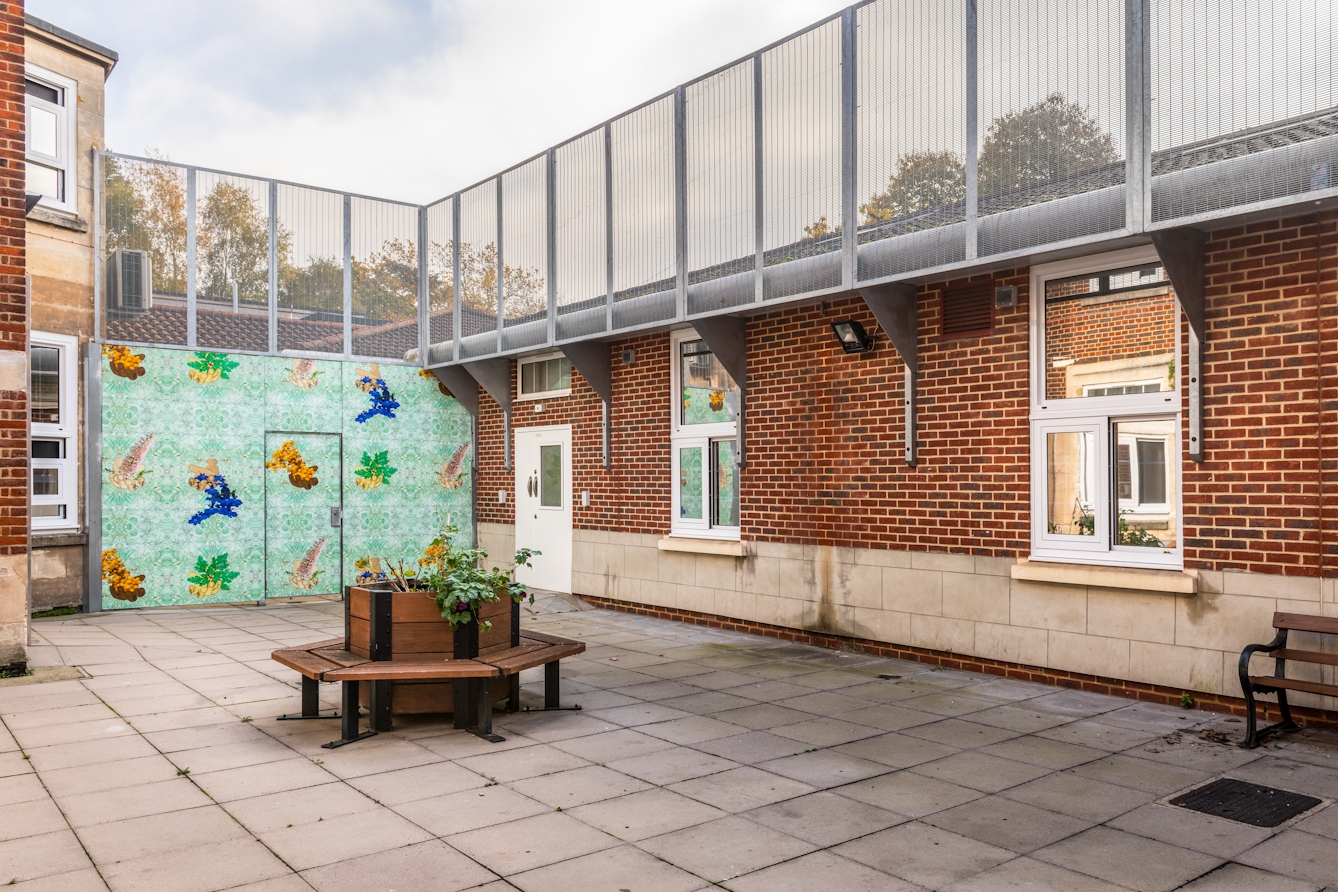
Sonia Boyce’s artwork for the courtyard gate features repeating and oscillating botanical patterns interspersed with hands from different ethnicities, each carrying a different flower or leaf. The yellow flower is acacia and is native to Africa; the pink flower is a lilac and is native to south-eastern Europe and Asia; the blue flower is a nasturtium found in Chile; and the green leaf is called a sanicula, meaning ‘health’ in Latin.
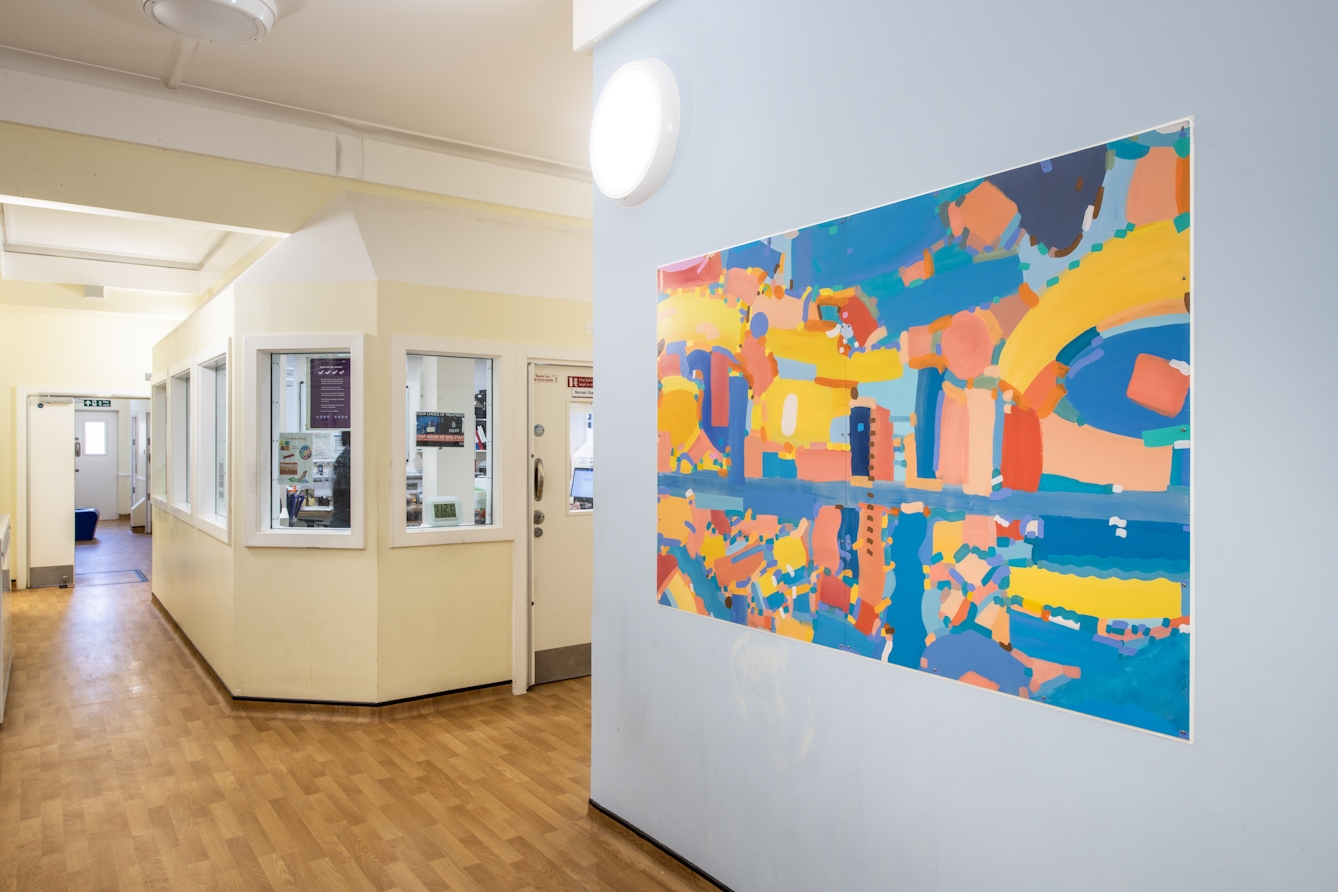
Artist and co-founder of Hospital Rooms, Tim A Shaw found that the conversations during workshops with the men at Croydon PICU often circled back to “being part of the world” and having roots or a home in Croydon. He made an artwork that is abstract but relates to maps and to Croydon.
Radical transformations
For an increasing number of patients, activists and artists, the current state of mental health wards is untenable – and they’re doing something about it. Along with curator Niamh White, artist Tim A Shaw runs Hospital Rooms, a project designed to inject joy into the ward environment.
Inspiration for the project came when a close friend of Shaw’s attempted suicide nearly five years ago and was placed under section. Shaw found that visiting his friend was “quite a shock”, especially when it came to the environment she was being cared for in. “The thing I found really weird was that you might be in three different rooms for three different visits and not be able to tell between them,” he says. “We wanted to make everywhere feel different.”
Five years on, the charity now regularly commissions artists to go into locked and secure units to radically transform the environment with colour and art, believing it has the power to “provide joy and dignity and to stimulate and heal”. Shaw and White and their artists first get to know both the space and the patients and staff who occupy it; artists often conduct workshops, to either make something “totally co-created” or use the consultation to create something of their own.
“The thing we’ve found out is that this is all about belonging,” Shaw says. “It’s a collaborative thing – it’s not just about making something for someone else, but understanding them, too.”
Hospital Rooms, Woodlands
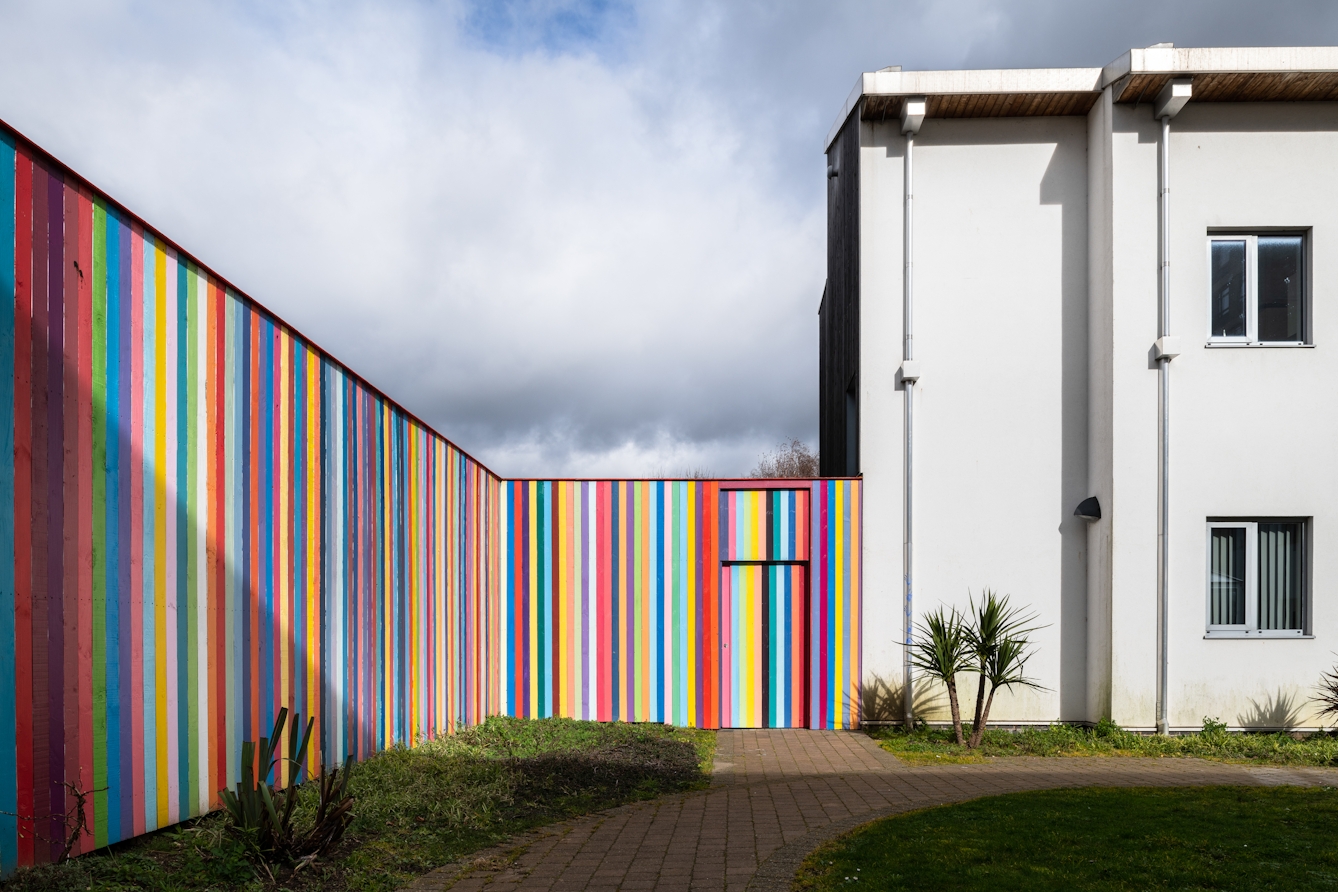
In September 2018 Hospital Rooms embarked on its first project outside London at Woodlands, a mental health unit that is part of Norfolk and Suffolk NHS Foundation Trust. Artist Tim A Shaw painted each of the 250 individual slats that make up the fence in 250 unique, hand-mixed colours. As well as being a vibrant and colourful artwork, the fence becomes a surface for thoughts, ideas and statements, which can be added using acrylic markers.
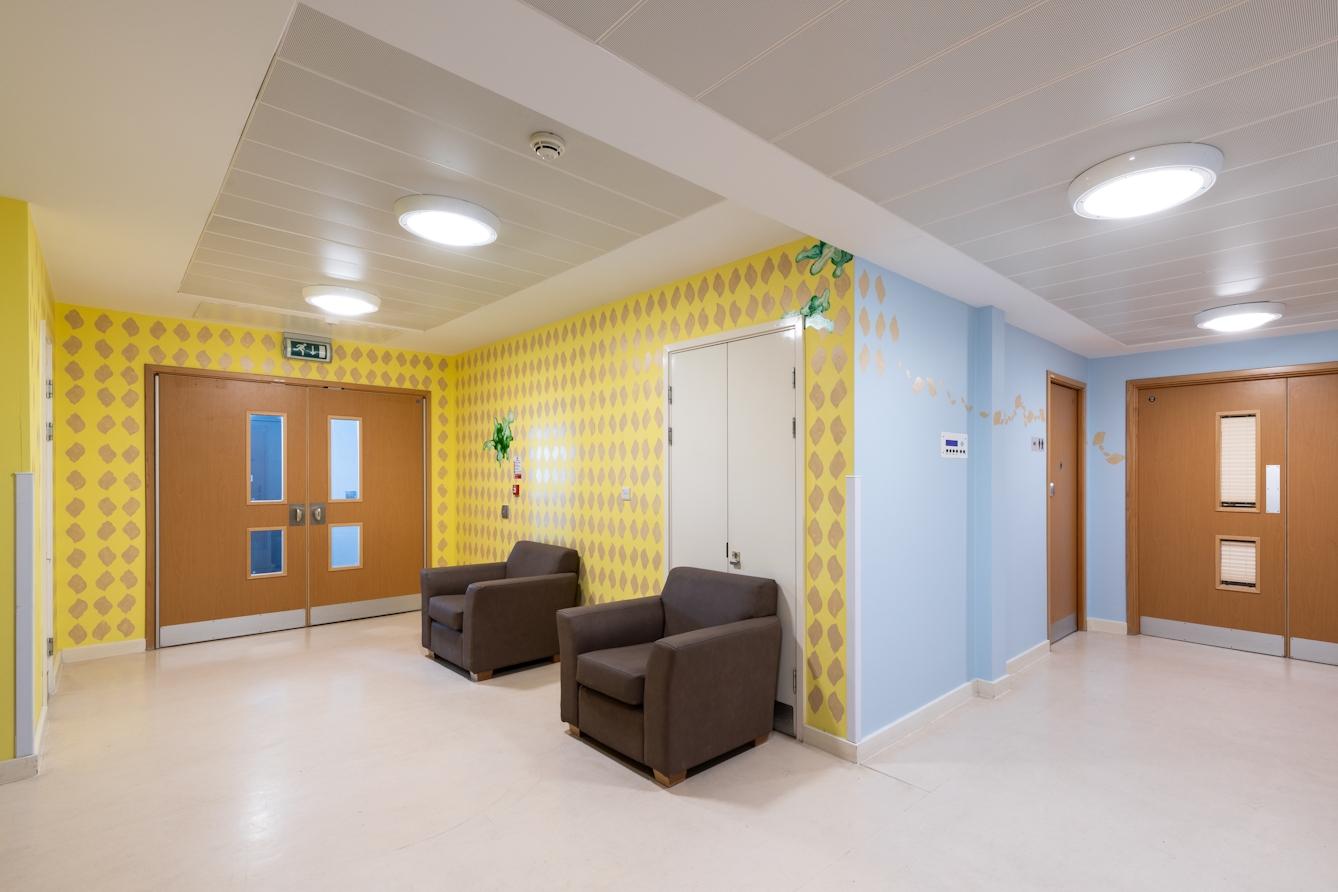
During workshops run by artist Rebecca Byrne, service users felt it was important to bring elements of the local area into 136 Suite. At Shingle Street Beach, a small coastal hamlet in Suffolk, Rebecca was inspired by a story of two friends who had formed a ‘recovery trail’ of whelk shells on the beach following a diagnosis of cancer.

Rebecca led a workshop with service users and staff where participants painted their own repeated patterns using vibrant colours and tessellated shapes. After this she painted the walls of the suite in blue and yellow tones, and added a pattern of hundreds of whelk shells that works its way throughout the lounge, bedroom and waiting area.
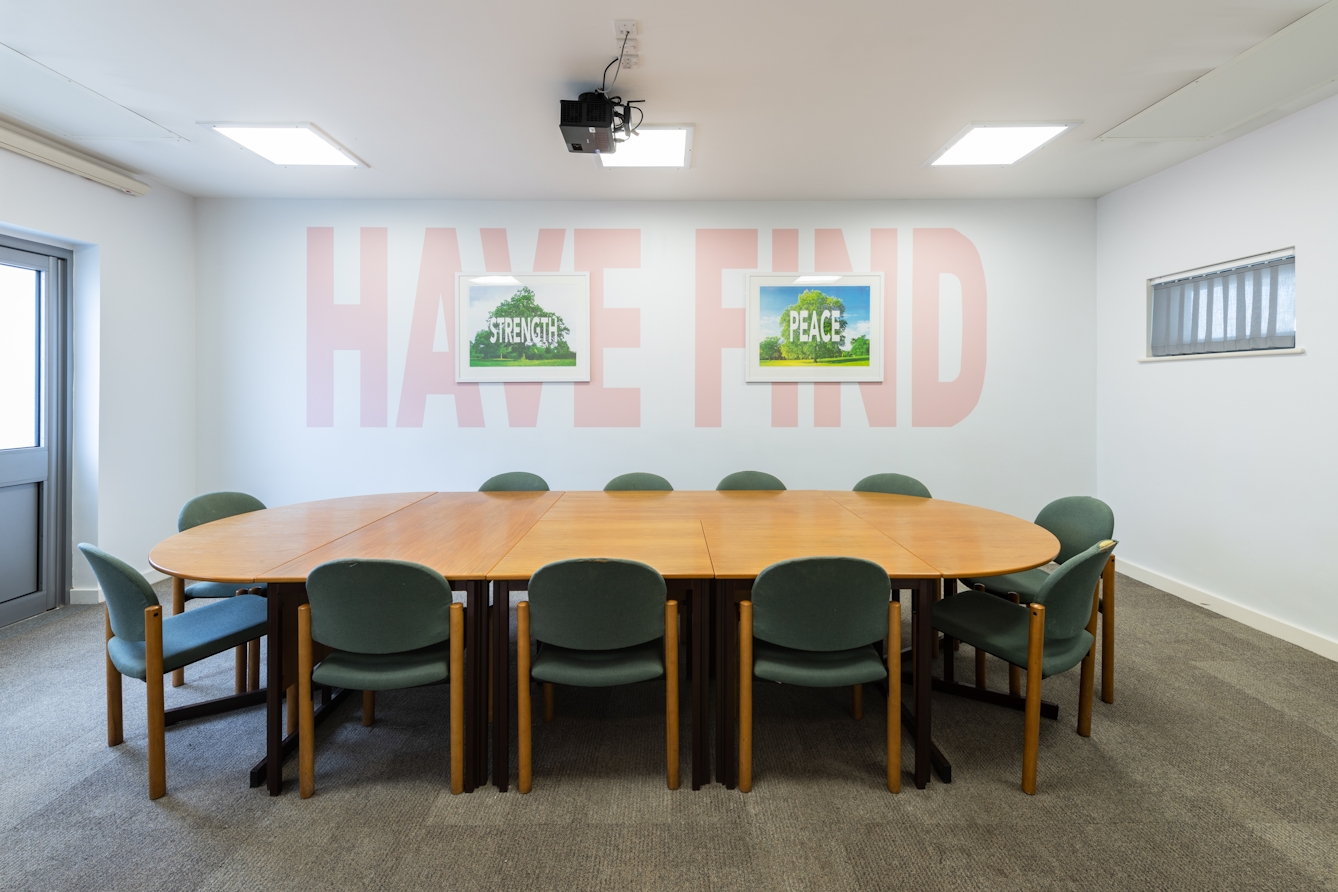
During workshops, artist Carl Rowe asked service users to come up with words they associated with green space, something that many of the service users felt was important to their health and wellbeing. The words ‘strength’ and ‘peace’ emerged repeatedly during his workshop, and he superimposed these over photographs of trees that can be found growing majestically in the local Christchurch Park in Ipswich.
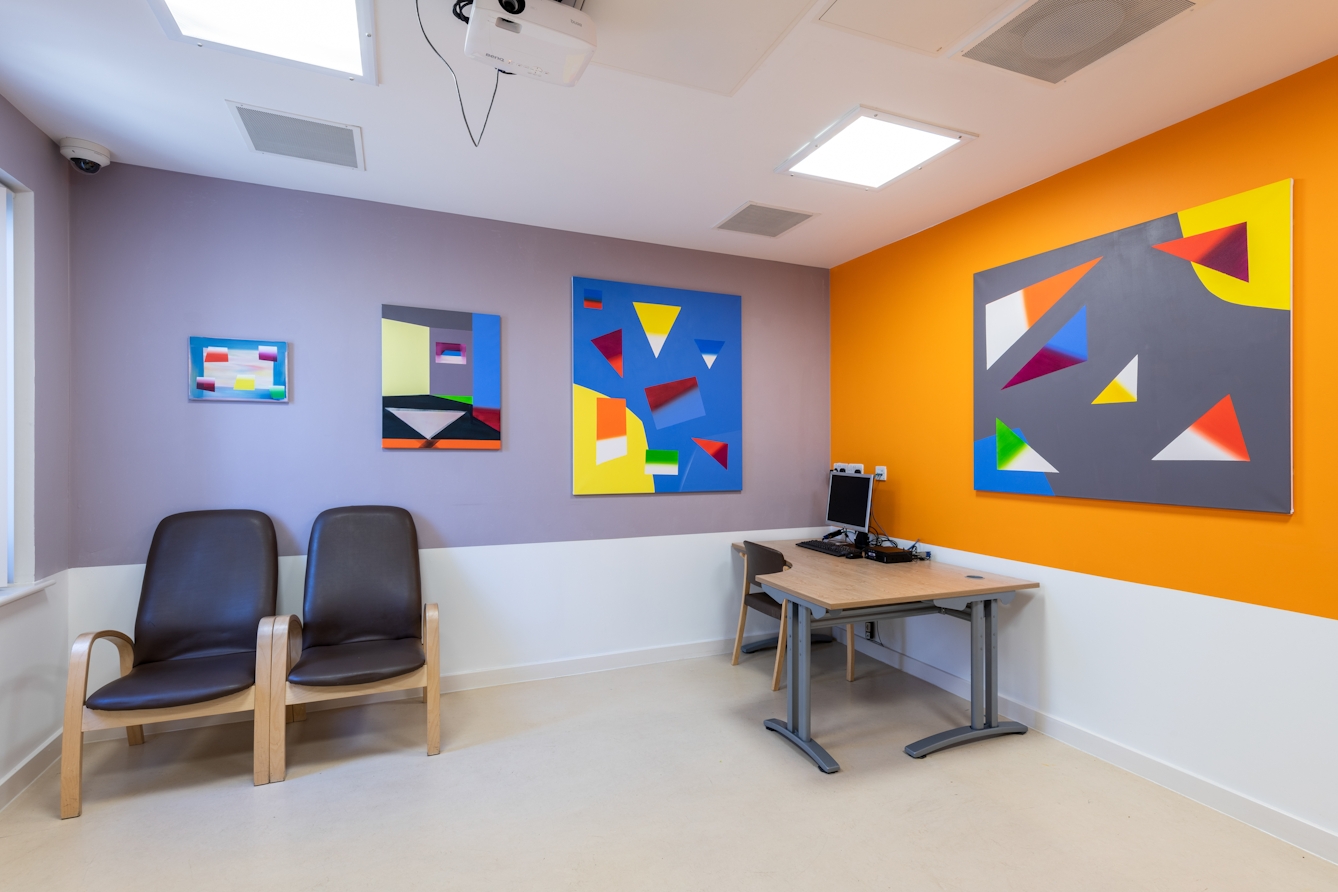
Artist Nancy Milner led a collage workshop for service users and listened to the experiences of giving and receiving care at Woodlands. The complexity of the conversations that happen in the Review Room resonated with Nancy and she wanted to make paintings that would reflect the diversity of experiences witnessed by the space, while also being sensitive to the viewer.
Designing the perfect hospital environment
James Leadbitter – otherwise known as the vacuum cleaner – is also using art to change the way we experience wards. His latest project saw him go into an inpatient mental health ward for seven to 14-year-olds at Great Ormond Street Hospital, asking them to imagine a different type of environment – where would it be, what would it look like, who would look after them?
“One of the first things we did was go around the ward and put Post-its on everything they didn’t like,” he says. “The ward, to be fair to that hospital, is pretty good. But they didn’t like the institutional feel, they didn’t like the temperature, they didn’t like the sound of the food machine, the cheese stuck on the chairs, that the DVDs only went up to the age of 12... it’s a hospital; it’s not a playful environment. The staff were engaged, but there was no sense of wonder or magic.”
One weekend, which Leadbitter wryly describes as “a little bit chaotic”, the group were taken to John Lewis to pick their perfect bed, sampling fabrics, colours and textures; another weekend they were asked to imagine what their perfect view would be – what they’d like to see when they look out of the window. At the end of the project, they created clay models of their perfect environments, which are now part of Wellcome Collection’s ‘Being Human’ exhibition. This act of creation, Leadbitter says, gave the children agency, a feeling often lacking in psychiatric environments.
The Vacuum Cleaner, ‘Oh My Gosh, You're Wellcome... Kitten’
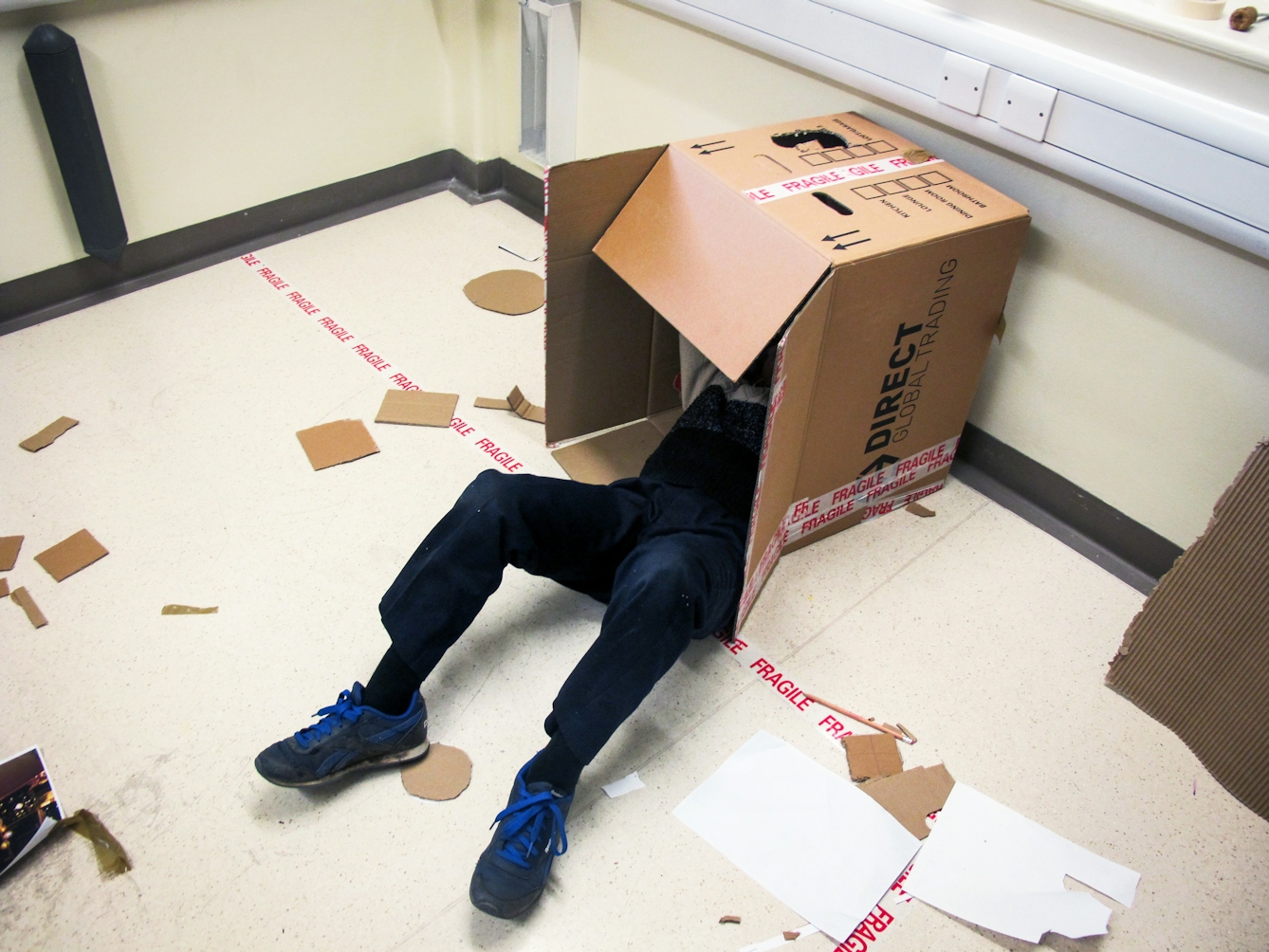
This project was a collaboration with Ishbel Mull (MUF Architecture/Art) and Caroline Moore (GOSH Arts), funded by Wellcome Collection, Paul Hamlyn Foundation and GOSH Arts. A ward at Great Ormond Street Hospital was transformed into an art and design studio for artist James Leadbitter and the children and adolescents from the mental health ward to explore what they want and need from their hospital environment.
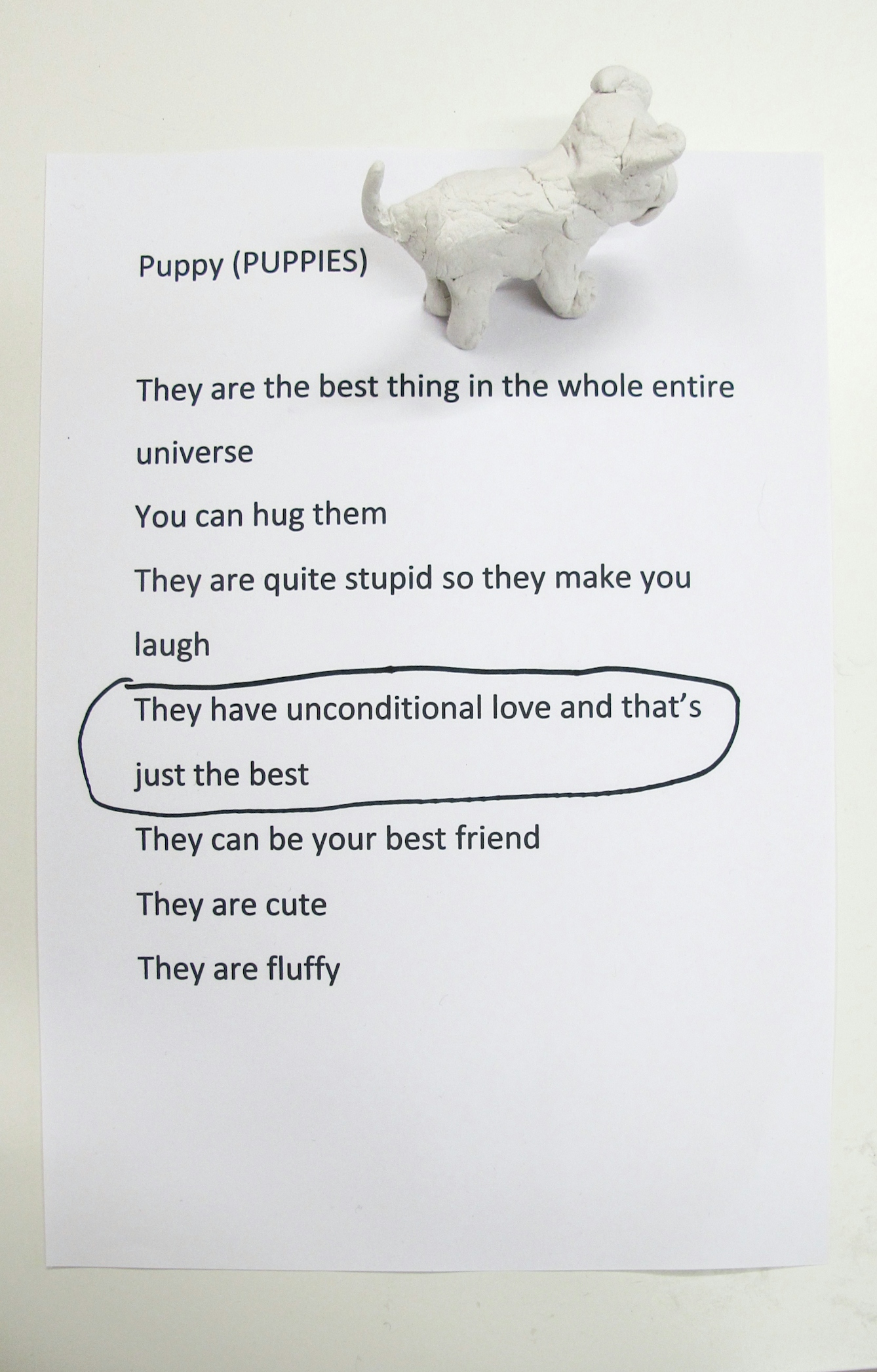
Spending long periods in hospital is a challenge for anyone, but particularly for children. As part of a workshop imagining things that might aid their sense of wellbeing, a young person at Great Ormond Street Hospital’s mental health ward created a clay puppy.
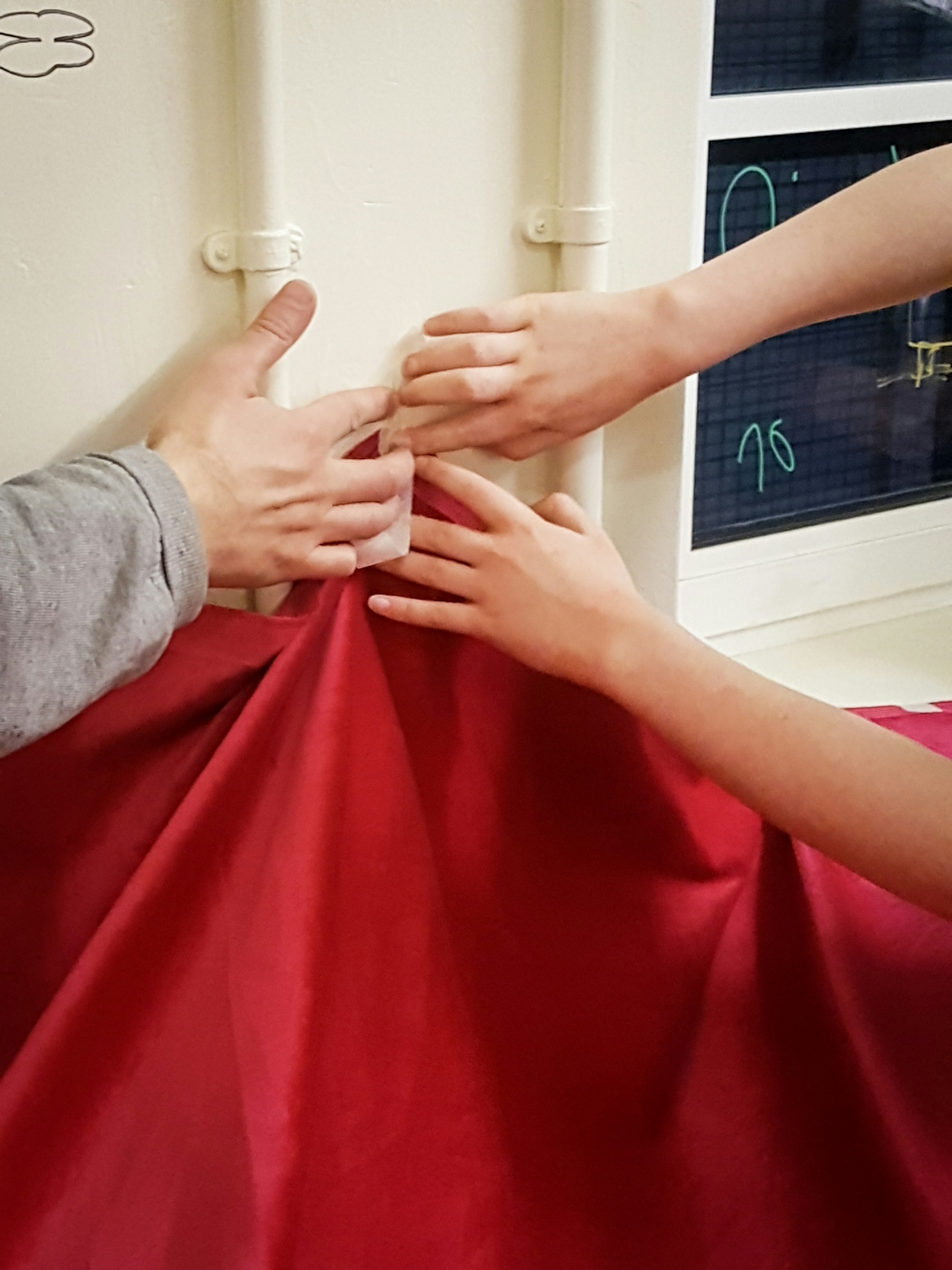
Using cardboard, clay, performance, soap, tin foil, the nurse’s bodies, orchids, sheepskin and a generous helping of silliness, the group set about answering questions such as “What spaces would you have in a perfect hospital?” Suggestions included a baby rhino in every children’s mental health ward, rooms with lakes and mountains, and a Hogwarts library.
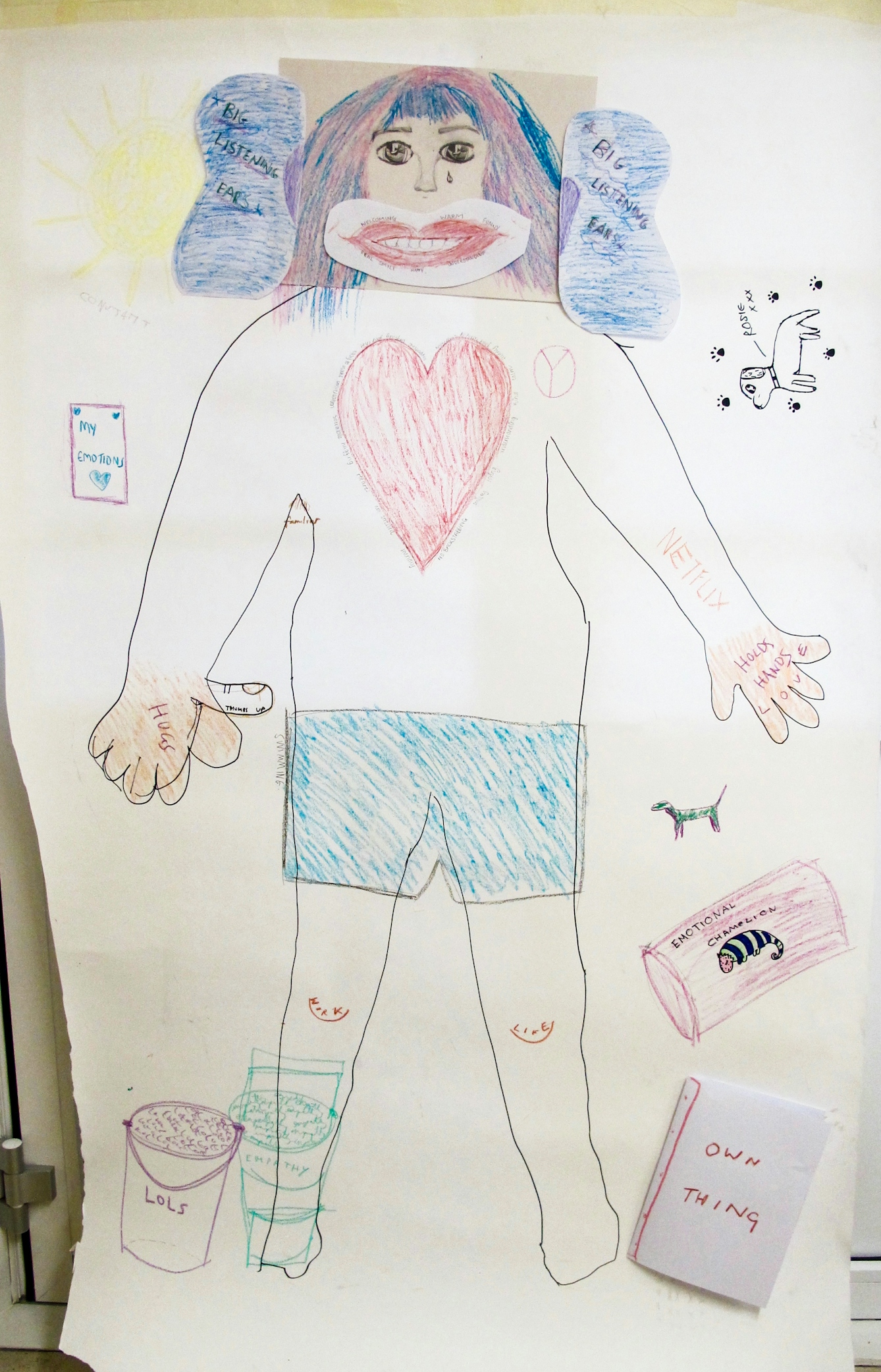
Trusting, listening, and having an amazing team of nurses who participated in all the activities helped to create a sense of community, fun and belonging. Suggestions for the perfect carer included nurses with big ears, buckets of empathy and Netflix accounts.

In this collaboration James used art as a tool for agency, to help the young people find their place in the world and change how things happen. Working together, they were able to create the environments and activities that would make them feel more positive, less stressed, and aid them on their journey.
Art, light and colour
As for what a ward could look like in the future, both Shaw and Leadbitter have plenty of suggestions. Shaw notes that when units are built, it’s the “5 per cent taken off the budget at the end” that makes a difference – a skylight removed, art left out. “A skylight would make such a difference to a space – it makes it feel not like a cell,” he says. “We need to make those spaces less dehumanising.”
Leadbitter has been hospitalised several times, an experience that informs his work, and he lists things he’d like to see for his own stays in mental health wards. He wants stimulation, the ability to use and move his body, luxury; things to “lie around on and look at”.
We need to make those spaces less dehumanising.
“Being in hospital is really hard,” Leadbitter says. “The children wanted magical things because their life is really hard. Obviously you’re not going to feel joyful all the time. But creativity can really allow you to push against the boundaries a bit. It can give you autonomy.”
This is key. Being under section is, at its very core, the absolute opposite of having autonomy. Often you have little to no choice: your days are regimented, your medication routine set, your therapy sessions scheduled. You might not want to be there at all.
For this to change, far more needs to be done than making wards look nice. But, while we’re there, what’s wrong with wanting a bit of colour?

